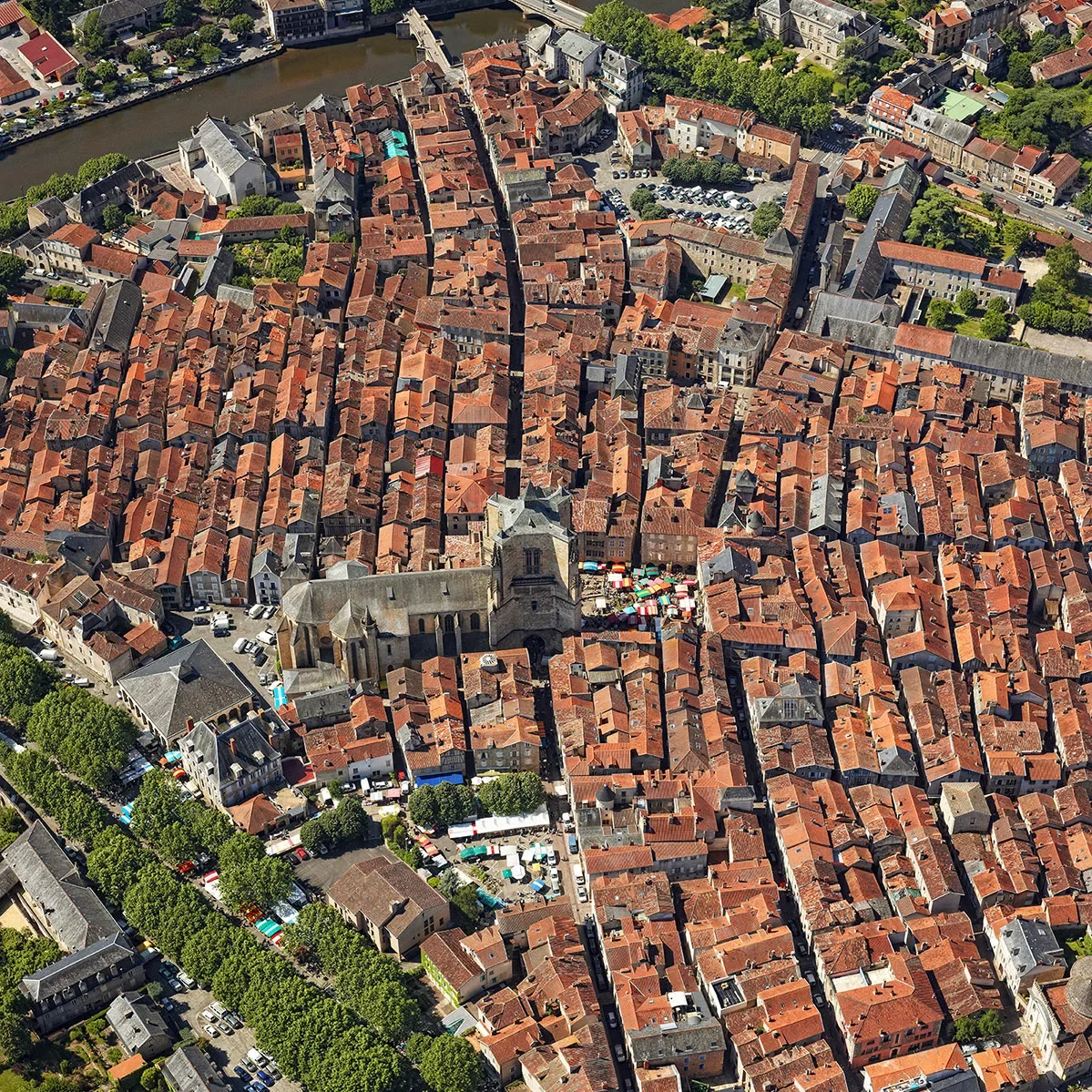Head west of Aveyron to explore the bastide town of Villefranche de Rouergue. Walk the squared streets of its historic center and immerse yourself in several centuries of history.
Located along a geological fault separating the Causse from Ségala, the bastide town of Villefranche-de-Rouergue has retained much of its identity. Its ground plan with straight streets organized around a central square lined with arcades conceals monuments listed and classified quite remarkable.
The bastide: a strategic foundation
In 1252, Alfonso of Poitiers, brother of Saint Louis, decided to build on the right bank of the Aveyron a country house in order to establish royal authority in the region after the crusade against the Albigensians.
Thus, he benefited from the richness of the surrounding soils to diversify livestock and agricultural production, exploit silver and copper from nearby mines and utiliser
the river to develop trade and a craft activity.
To encourage people to join the bastide, the sovereign authority offered privileges for new residents, through land donations and exemption from certain taxes. The latter received an ayral to build their house, a cazal to cultivate and were freed from the granting and the tonlieu.

A prolific management
Very quickly, the Villefranchoise population numbered more than 5 inhabitants. Many of them made their fortune by working with meat, fabrics, wood, skins, silver, copper... More than 60 goldsmiths worked in the bastide at the beginning of the XNUMXth century.
To meet their needs, four consuls elected by direct suffrage managed political, judicial, social and economic affairs. The latter collected the tax and rapidly developed three weekly markets and four major annual fairs. It is said that everything was sold there and that people came from afar to buy and sell there. This is why certain buildings in the bastide are imbued with Italy, Spain and even Norway.
The country house: uexceptional architecture
Most of the streets in the old town are lined with half-timbered houses and stone. Some of them are classified as Historical monuments, such as the Combettes, Gaubert, Armand houses as well as the Dardenne house. These have quite elegant sculpted decoration from the XNUMXth and XNUMXth centuries, testifying to the wealth of the city at the junction of the Middle Ages and the Renaissance. Among the emblematic elements of the heritage architectural villefranchois,
we can cite the bridge and the Fountain of the Consuls, built at the beginning of the XNUMXth century, the Notre Dame collegiate church, marvel of the Gothic periods with its bell tower culminating at 58 meters in height, the chapel of Saint-Jacques, witness to the importance of pilgrimage in the city, the Chapel of the Black Penitents, a jewel of Baroque art, and the Chartreuse Saint-Sauveur, a masterpiece of flamboyant art, on the other side of the river.




How to visit the bastide town of Villefranche de Rouergue?
Do you want to discover the bastide town of Villefranche? Several possibilities are available to you to discover the heritage of this city which has survived the centuries.
Guided tours
Follow our tour guides on a guided tour of the historic center of Villefranche de Rouergue. Your guide will reveal the secrets of the bastide, its hidden treasures and its rich history.
The visit with map or audio guide
Get a visit plan from the tourist office and explore every corner of the bastide. For more information, let yourself be carried by the audio guide along the streets of Villefranche de Rouergue. Free.
The bastide town of Villefranche with the family
- For children aged 6 to 12, remove the game booklet The Mystery of the Spice Merchant at the reception of the tourist office. Free.
- For teenagers, ask for the booklet Little murder in a bastide and lead the investigation in the streets of the bastide. 3€.



















